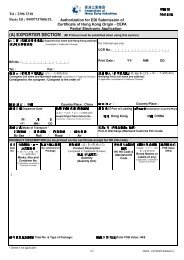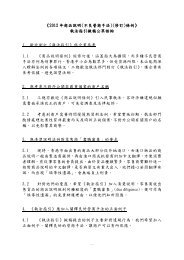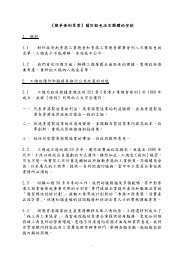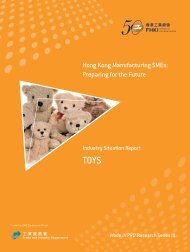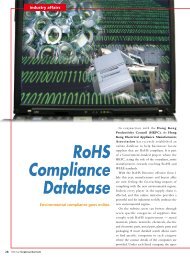Hong Kong Manufacturing SMEs: Preparing for the Future
Hong Kong Manufacturing SMEs: Preparing for the Future
Hong Kong Manufacturing SMEs: Preparing for the Future
- No tags were found...
Create successful ePaper yourself
Turn your PDF publications into a flip-book with our unique Google optimized e-Paper software.
105Strategies to Deal with InternalManagement ChallengesThe vast majority of <strong>SMEs</strong> that are startedaround <strong>the</strong> world fail. The main reasons <strong>for</strong> <strong>the</strong>sefailures are not challenges posed by <strong>the</strong> externalenvironment, but ra<strong>the</strong>r shortcomings in internalstrategies, management, operations, and financialcontrols. In many cases, <strong>the</strong>se shortcomings aredue to limited resources, stretched managementpersonnel, and incomplete strategies or businessplans. Some of <strong>the</strong> main internal challenges <strong>SMEs</strong>face:• Selecting businesses in which to compete• Formulating compelling strategies or businessplans• Understanding customers• Understanding competitors• Developing clear competitive advantages• Financing operations and financial management• Administering and Managing <strong>the</strong> firm• Keeping up to date on market, technological,and managerial developments• Marketing and selling to existing and potentialcustomers• Reducing dependence on individual customersand suppliers• Additional challengesSelecting Businesses<strong>SMEs</strong> sometimes get into new businesses becauseof an apparent opportunity without thinkingthrough exactly how <strong>the</strong>y will succeed in <strong>the</strong>business, or in fact whe<strong>the</strong>r it is possible to succeedin <strong>the</strong> business. The following are steps that can betaken to select businesses in which to compete:• Link to <strong>the</strong> knowledge and skill set of <strong>the</strong>SME owner and managersFor <strong>SMEs</strong>, <strong>the</strong> advice is to “do what you know.”Since <strong>the</strong> firm often depends on <strong>the</strong> knowledgeand skill set of a small number of people, it isimportant to understand what this knowledgeand skill set is and in what businesses <strong>the</strong>y maybe leveraged. Sometimes <strong>the</strong> knowledge couldbe very narrow and appropriate <strong>for</strong> only a singleindustry or even a single segment in a singleindustry. In o<strong>the</strong>r cases, <strong>the</strong> knowledge and skillsmay be more broadly applied.• Understand <strong>the</strong> ease of entryEasy entry in terms of minimal capital costs,licence restrictions, and special qualificationsor approvals may mean that it is easy <strong>for</strong> <strong>the</strong>SME to enter, but it also means that o<strong>the</strong>r<strong>SMEs</strong> can enter as well. The best situation is anindustry that is difficult to enter in general, butin which <strong>the</strong> SME has particular knowledge,skills, resources, or relationships that make iteasier <strong>for</strong> <strong>the</strong> particular firm to enter. The key isunderstanding <strong>the</strong> potential asymmetries thatmight give <strong>the</strong> firm an advantage in <strong>the</strong> newbusiness.• Understand where <strong>the</strong> firm can be uniqueA good business to enter will be one in which<strong>the</strong>re is something distinctive about <strong>the</strong> firmthat gives it a unique advantage in terms ofcreating value <strong>for</strong> customers while beating <strong>the</strong>competition. By definition, it is impossible to gainan advantage versus competitors by copying <strong>the</strong>irstrategies or by having strategies and resourcesthat are easily copied, bypassed, or substituted.Thus firms need to understand or develop uniqueattributes that are hard to copy, bypass, orsubstitute <strong>for</strong>.



